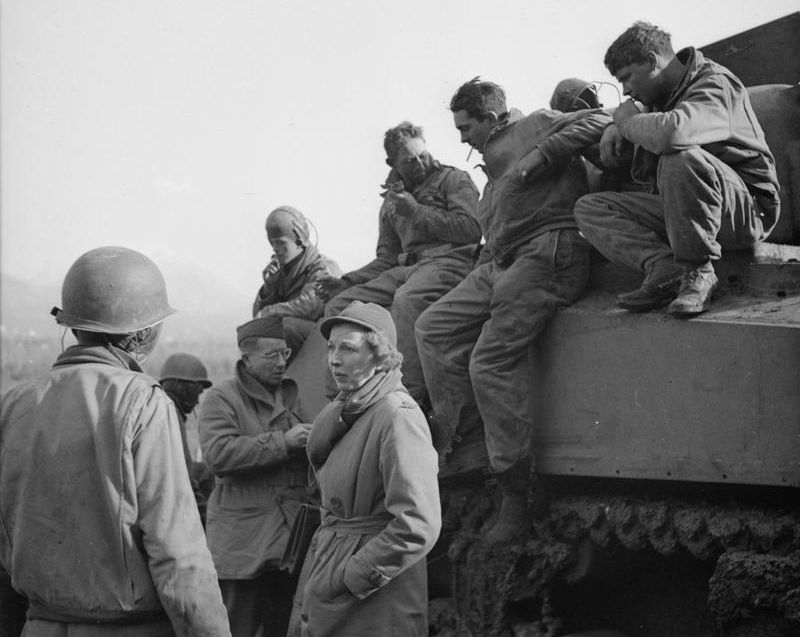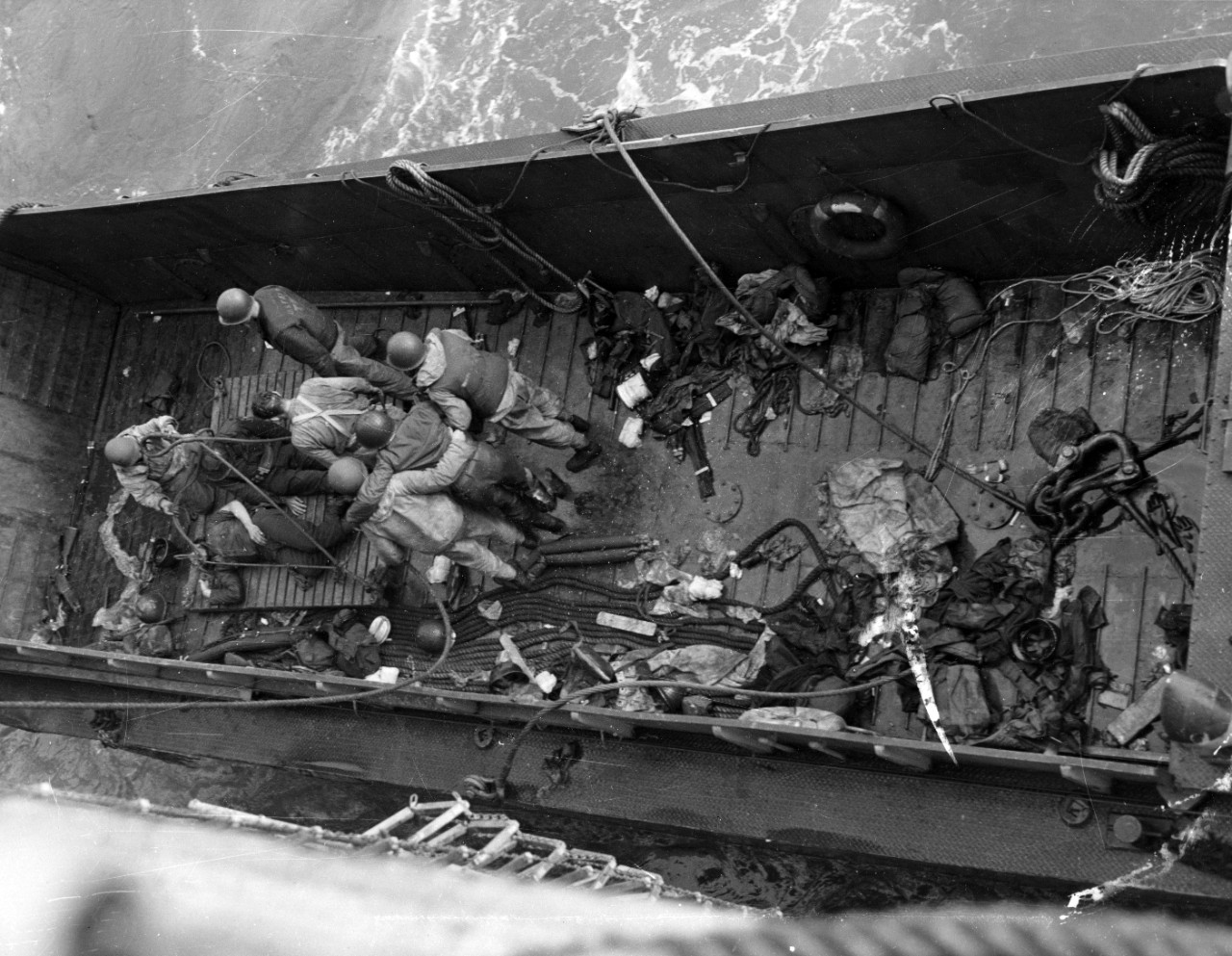The famous journalist was arrested for stowing away on a hospital ship to cover the action on Normandy, writing a more compelling article than did her husband, Ernest Hemingway.
-
Summer 2024
Volume69Issue3

Like everyone else in her line of work, Martha Gellhorn was anxious in the spring of 1944, wondering where the invasion of Western Europe would begin and how she might secure a place near the action.
The veteran war correspondent wrote to her friend Eleanor Roosevelt on April 28, frustrated that she had allowed her husband, Ernest Hemingway, to coax her back from covering the war for Collier’s magazine to spend time with him in Cuba:
Hemingway had decided he wanted in on the action, and she helped arrange passage to England for him … while essentially leaving herself out in the cold. Of all the magazines he could have pitched, Hemingway chose Collier’s, which eagerly snapped up the big-name novelist as a correspondent. That move and the military’s general refusal to allow women reporters anywhere near the front lines seemed to assure that Gellhorn would indeed miss out on her dream story — even if she could make it back to England.
While Hemingway winged across the Atlantic in mid-May, trading pleasantries with movie star Gertrude Lawrence on a leisurely flight, Gellhorn had to beg her way onto a Norwegian freighter transporting dynamite across the sea.
She did make it across, though, and hustled her way onto the big story, just like she always had.
Furious at Hemingway for the way he had discarded her in pursuit of his own glory, she checked into a separate room at the Dorchester in London after arriving from Liverpool. According to her biographer, Caroline Moorehead, Gellhorn mostly looked on in disgust the next several days as Hemingway partied with his ever-present retinue of admirers, even after being released from the hospital following a serious car accident.
When the London-based correspondents got the call early on June 6, Gellhorn reported to the Ministry of Information. Hemingway had been gone for a few days, preparing to storm the beaches of France in a heroic return to the continent. After the initial rush of SHAEF’s release of Communique No. 1, officially announcing the invasion, to a room full of correspondents, Gellhorn headed out into the streets of the capital.

With those steps, she began to assemble a piece that would run on a single page in the July 22,1944 issue of Collier’s. Compared to Hemingway’s cover story “Voyage to Victory,” it was presented as almost an afterthought. But, in terms of pure journalism, Gellhorn’s piece delivers a deeper, broader account of how the day actually felt than did Hemingway’s almost comically self-serving tome.
However powerful were Gellhorn’s observational skills, the fact remains that there wasn’t much happening in London, and that didn’t sit well with her. So, she set off for the south coast, inching closer to the action. Her July 22 piece describes the scene at an unnamed British port on “D-plus-one”, June 7:
The story weaves in a few more vignettes from the port, from the towns near the coast, from London. But there was much more to Gellhorn’s invasion experience than this initial taste.
After surveying the port, she headed to the docks. A military policeman asked her what she was doing there, and she said she was there to interview nurses for Collier’s. That seemingly inane assignment did the trick, and Gellhorn simply walked onto a hospital ship at anchor nearby and locked herself in a bathroom.
Late that night, the ship pulled out of the harbor and set out for the Channel. It may not have been the front lines, but Gellhorn had herself a story.
It appeared in the August 5 issue of Collier’s, this one a proper magazine piece running a few thousand words. The story makes no mention of Gellhorn’s reporting methods, which would permanently alter the course of her war. Its focus is squarely on the nurses and doctors sailing into harm’s way to collect the wounded from Omaha Beach.
According to Caroline Moorehead’s account, Gellhorn blended reporting with various shipboard duties, helping out as an interpreter and helping find water and food for wounded soldiers from multiple countries. But always observing.
Over and over, Gellhorn returns to the endless drive of the six nurses on board, the doctors, the support staff. Of the hundreds of men brought on board that day, she writes, only one of them died on the ship, “and he had come aboard as a hopeless case.”

After a series of fascinating snapshots of the wounded, American and German alike, Gellhorn gets to what would be a key differentiator between her invasion coverage and that of her soon-to-be-ex-husband. While Hemingway’s story was heavy on bluster, he didn’t actually get ashore in France until weeks later. On June 8, though, Gellhorn made it onto Omaha Beach with a small crew from the hospital ship sent to retrieve patients.
The story continues in extensive detail as the medical personnel complete their duties and eventually sail back to friendlier shores, every bunk in the ship occupied. Sounding exhausted herself, Gellhorn sums up the experience near the end of her piece:
Upon arrival, Gellhorn returned to London to write those pieces for Collier’s. When word got out about her escapade, though, she was arrested by military police.
Sent to a training camp for nurses outside London as a sort of exile, she eventually went AWOL and found her way to Italy. From there, she ad-libbed as an unaccredited correspondent, scraping by without any of the official assistance afforded to her colleagues.
Writes Caroline Moorehead: “She would spend the remaining year of the war in Europe, sometimes in uniform, sometimes out of it, ducking and dodging from front to front, using her energy and charm to win over officers into allowing her to travel with their regiments, scrounging lifts, and filing stories whenever she could cajole wireless operators into giving her a line. Her looks, her obvious courage, and her utter disregard for authority came in very handy. Far fewer doors, she later admitted, would have opened for a man.”
While that may have been true, there’s also no question that a male reporter with Gellhorn’s drive and ability would have had a far easier time covering the war through official channels. Sometimes by necessity, sometimes by choice, Gellhorn had to go her own way, but her wartime output stands with the very best of any other correspondent.

